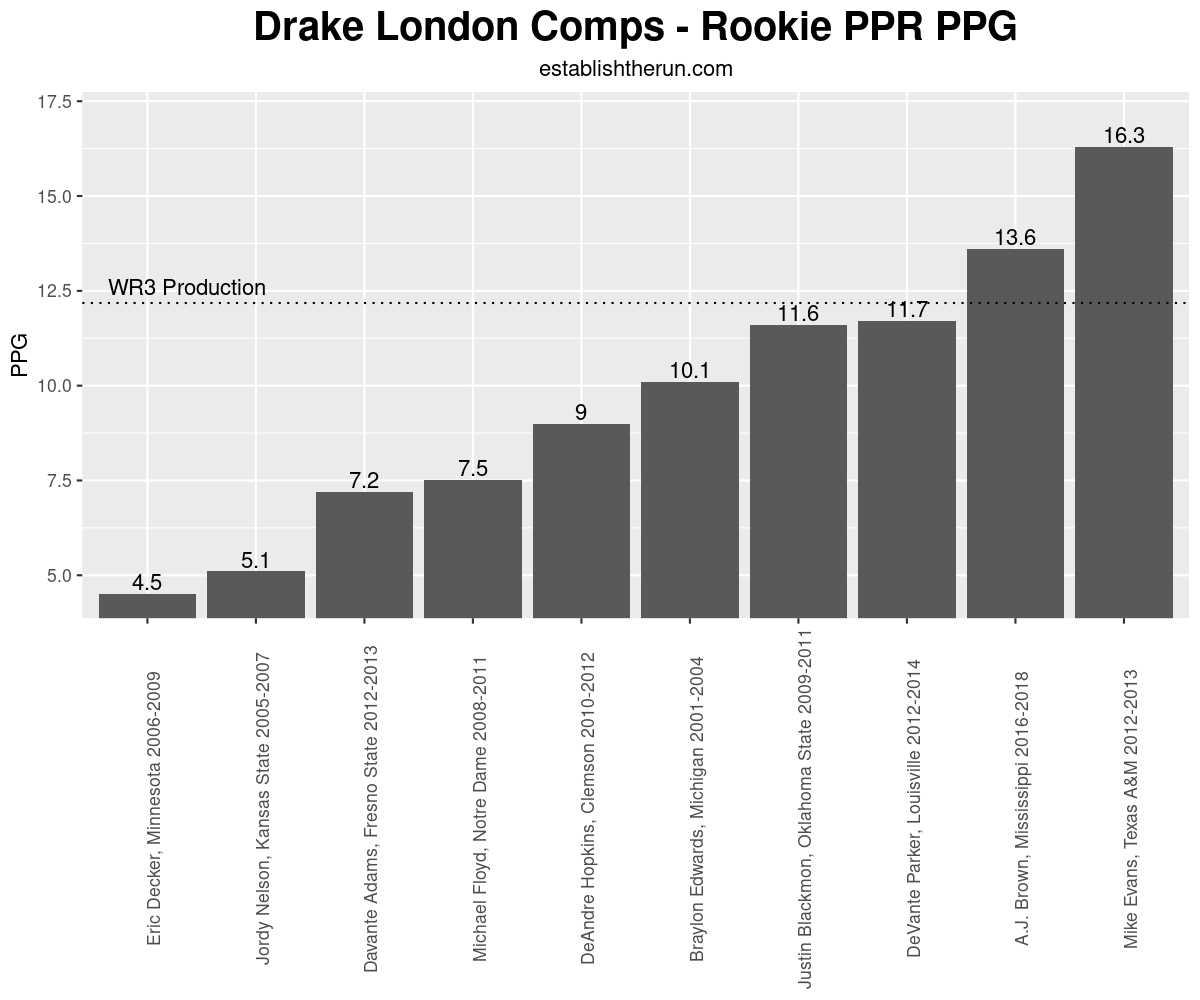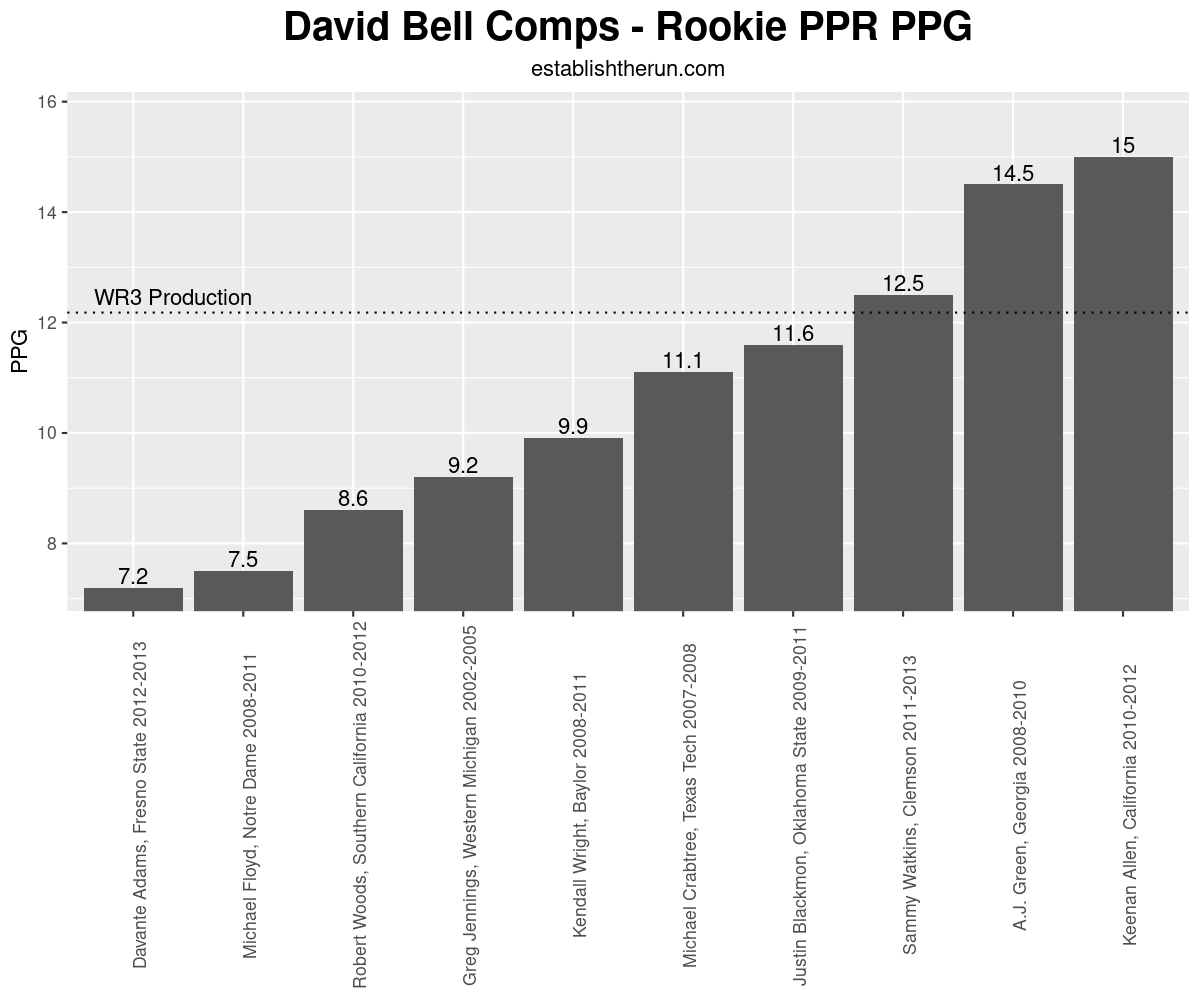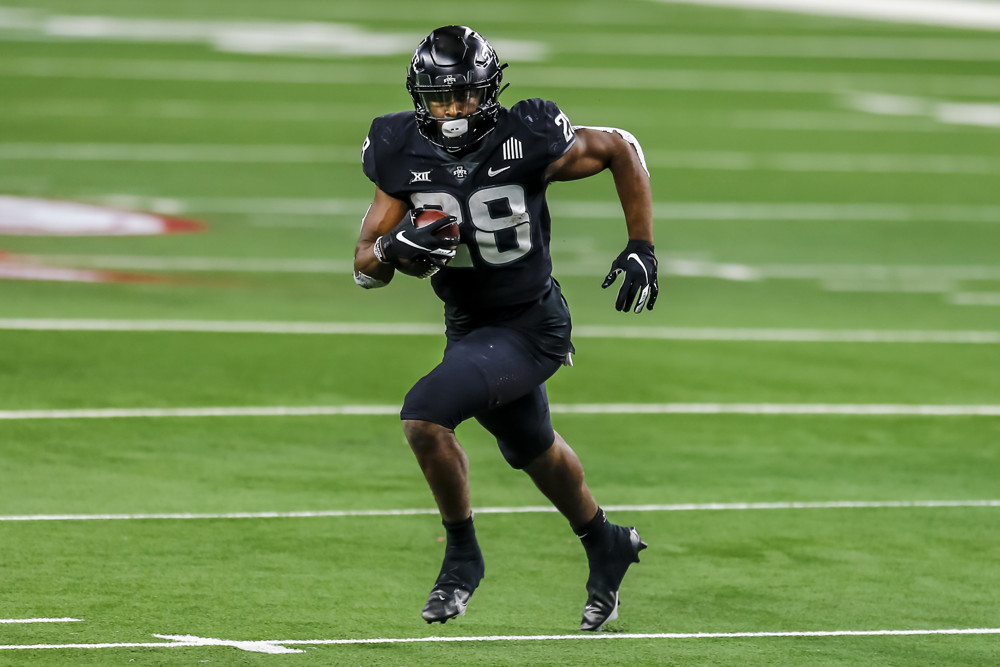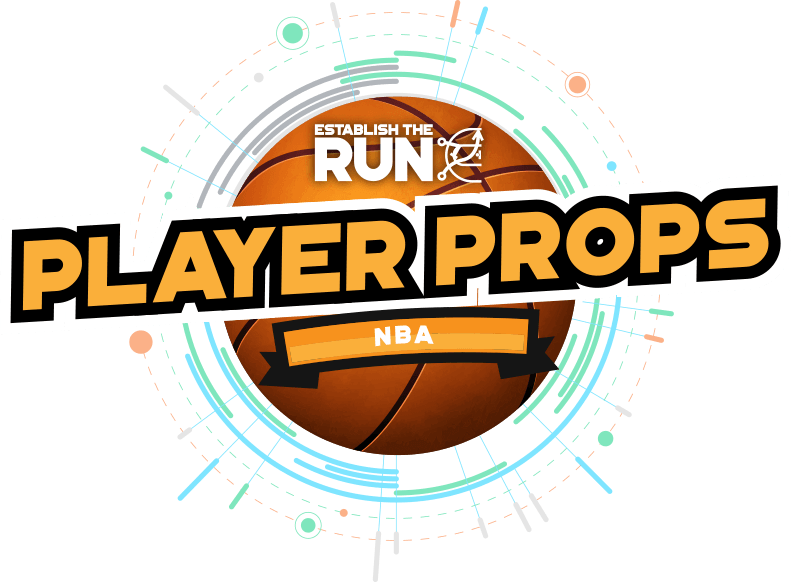The NFL Combine is in the books, and we learned a lot at the offensive skill positions. Athletic testing is not generally at the forefront of our player evaluations, but measurements are critical to providing the most accurate analysis possible. These were our 10 biggest takeaways from the week in Indy.
1. Skyy Moore is a Round 2 pick
When we originally published our prospect profile on Moore, the expert rankings and industry mock drafts had him in Round 3. We believed based on recent chatter that he was likely closer to being on the Round 2/3 bubble. Those concerns look like they can be completely put aside. Moore was not considered a burner coming in, but crushed the 40-yard dash with a 4.41. He should be considered solidified as a Round 2 selection, which greatly bolsters his chance to find success.
2. Kenny Pickett is an outlier
There was a lot of talk in the weeks leading up to the Combine about Kenny Pickett’s hands, and how they may measure to be extremely small. He even declined to have them measured at the Senior Bowl. On Thursday, Pickett’s hands measured an abnormally small 8.5 inches, leading to questions about his NFL viability.
perspective on Pickett's 8.5 inch hands
of 663 QBs w measured hand sizes since 1987, only 9 had smaller than 8.5" hands
there is no QB in the NFL with 8.5" hands
there has been no QB to enter the NFL in at least 5 yrs w 8.5" hands
last successful QB w 8.5" hands was Mike Vick
— Warren Sharp (@SharpFootball) March 3, 2022
Of course, we do not believe hand size alone is a death knell for Pickett. Rather, it is fair to consider him a sizable outlier at a position where hand size could be an impediment to someone making it this far in the scouting process. It is also worth noting that Pickett is double-jointed in his thumb, which leads to some difficulty measuring his hands. This is unlikely to be the last time we hear about this possible issue.
3. Drake London and David Bell won the weigh-in
The value of the workouts is heavily-debated in draft circles, but one thing we know matters a good deal is weight. It is a significant factor in all of our statistical analyses. London and Bell are both prospects we already have a fair amount of affinity for, but then they weighed in well over their in-season listed number. That solidified the comps for both players, giving a wildly optimistic range of outcomes.


4. Breece Hall is RB1
We already have Hall as our top rookie RB, but his Combine performance should make him the prohibitive favorite to be the first back drafted in the real thing. He blazed a 4.39 in the 40 at 217 pounds, then posted a 40 inch vertical and 126 inch broad jump. There is a small chance he could sneak into the first round, which would be outstanding for his fantasy value. No matter what, Hall is unlikely to move from the top spot in our rankings.
5. Desmond Ridder has cheap superflex rushing value
Ridder projects as a second-round pick, which likely caps the ceiling of his draft position in rookie drafts. But we know that there is value in athletic testing when projecting QBs for fantasy. Ridder’s 4.52 in the 40 was tops at the position, and he followed that up with explosion in the jumps. We should feel good that if and when Ridder takes an NFL field as a starter, that he will be able to add points with his legs.
6. Jelani Woods is a TE to watch
Since we want our TEs to be primarily pass-catchers for fantasy, there is value in athleticism at the position. Woods is a massive 6’7″ and 259 pounds, but ran a 4.61 in the 40 — second-best at the position out of players who ran this week. He also paced the TE field on the bench with 24 reps. After originally being recruited to be a QB then transitioning to H-back at Oklahoma State, Woods is an intriguing TE prospect with this athletic profile.
7. Kyren Williams is in trouble
Williams entered the Combine as our RB4, but it is likely he slips down the rankings after a miserable performance in Indy. His 4.65 40-yard dash time was the worst at the position, and Williams performed poorly in the jumps as well. He is a pass-catcher that we were not projecting to win with athleticism, but this outing is likely to send Williams further down draft boards, which would limit his ability to produce for an NFL team — and for your fantasy squads.
8. Wan’Dale Robinson’s usefulness is in jeopardy
Robinson is a converted RB who was a dynamic playmaker for Kentucky. His listed height and weight was 5’11” and 185 pounds — large enough to look like an explosive slot option at the next level. Unfortunately, his measurements were far off from these numbers. He is actually 5’8″ and 178 pounds, which is likely to give fantasy gamers Rondale Moore flashbacks as a potential gadget guy instead of a featured option. Robinson also ran a pedestrian 4.44 40 for his size, and was below average in the jumps.
9. Alec Pierce is this year’s Nico Collins
Also known as — the WR who looks the part but didn’t have great college production. Pierce was an elite volleyball athlete in high school before becoming a WR for the Bearcats, and he showed it all at Indy. He ran a 4.41 40, and posted a vertical and broad jump of 40.5 and 129 inches respectively at 6’3″ and 211 pounds. We’ve seen players like Pierce in the past impress immediately once given NFL opportunities. He is likely to drafted somewhere around the top-100, with the potential to rise now that this profile is on everyone’s radar.
10. The agility drills are dead
The NFL made some pretty major changes to the Combine schedule this season, with prospects participating in all drills the same day. It was also transitioned to a primetime event, with 40’s starting to be run around 4pm ET, and agility drills happening late in the evening. As a result, most prospects skipped them entirely — especially at RB. Every single RB prospect opted out of the three-cone drill, which is a particular bummer since it is a strong indicator of success. We will have to wait for hand times from pro days in order to receive some insight on RB agility.



